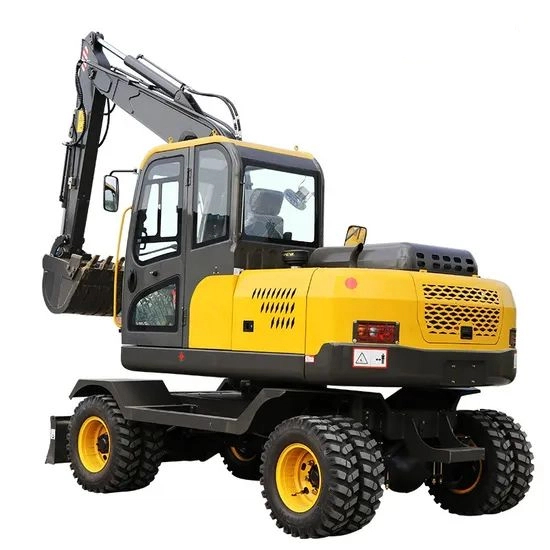When selecting an

, it is necessary to comprehensively consider various factors such as the operation scenario, terrain conditions, construction requirements, and budget costs. The following is a detailed purchasing guide to help you make a suitable decision:
- Municipal Engineering/Urban Construction: Such as road construction, pipeline laying, and greening renovation, which require frequent site transfers or operations in narrow spaces. wheeled excavators (high flexibility and convenient site transfer).
- Mining/Wild Engineering: Such as mining, farmland renovation, and water conservancy projects, with complex terrains and high-intensity operations. crawler excavators (strong cross-country capability and good stability).
- Building Foundation/Heavy Construction: Such as rock crushing and large-scale earthwork excavation, which require high digging force. Choose large-tonnage crawler excavators (over 10 tons, with strong digging force).
- Hardened Pavement/Flat Terrain: Wheeled excavators (fast driving speed, no need for trailers).
- Muddy/Soft/Rough Terrain: Crawler excavators (crawlers have a large ground contact area, low pressure, and are not easy to get stuck).
- Small Excavators (<10 tons): Suitable for small earthworks and indoor demolition. Wheeled or small crawler types (such as 5-8 ton crawlers) can be selected.
- Medium Excavators (10-20 tons): Municipal engineering and ordinary earthwork operations. Both wheeled and crawler types are acceptable (wheeled for convenient transfer, crawler for complex terrain).
- Large Excavators (>20 tons): Mining and heavy construction must use crawler types (large-tonnage crawlers have strong digging force, such as models over 30 tons).
- Wheeled Excavators: Flexible steering, suitable for short-term and multi-scenario switching operations, but with weak digging force and not suitable for long-term continuous high-intensity operations.
- Crawler Excavators: Strong chassis stability, can operate on slopes or uneven ground, and are suitable for long-term continuous construction (such as mining excavation).
- Wheeled Excavators: Lower price (20%-30% cheaper than crawlers of the same tonnage), suitable for limited budgets or small and medium projects.
- Crawler Excavators: Large-tonnage models have high prices (such as crawlers over 50 tons can reach millions of yuan), but have a wide application range.
- Wheeled Excavators:
- Lower fuel consumption (fast driving speed, small engine load), no need for trailers for site transfer, saving transportation costs.
- Tires wear quickly, and replacement costs are high (especially on rough roads), but the chassis structure is simple and easy to maintain.
- Crawler Excavators:
- High fuel consumption (slow driving speed, large engine load), need trailers for site transfer, increasing transportation costs and time.
- Crawler components (track chains, idlers) are prone to wear, with high maintenance and replacement costs, and difficult chassis repair.
- Imported Brands: Caterpillar, Komatsu, Volvo, etc., with stable performance and long service life, but high prices and high parts costs.
- Domestic Brands: Sany, XCMG, LiuGong, etc., with high cost performance, many after-sales outlets, and timely parts supply, suitable for domestic engineering needs.
- Pay attention to engine emission standards (such as China VI, Euro V, etc.). Urban operations require low-emission models to avoid environmental policy restrictions.
- Select attachments according to operation needs (such as breaker hammers, grabs, drilling devices, etc.). Crawler excavators have stronger attachment compatibility and are suitable for diversified operations.
- Determine Core Needs: First clarify "where to work" (terrain) and "what to do" (operation type).
- Compare Machine Characteristics:
- Frequent site transfer and urban operations → Wheeled excavators (5-20 tons).
- Complex terrain and high-intensity construction → Crawler excavators (over 10 tons).
- Weigh Costs: Limited budget and short-term projects → Wheeled; long-term high-intensity projects → Crawler.






